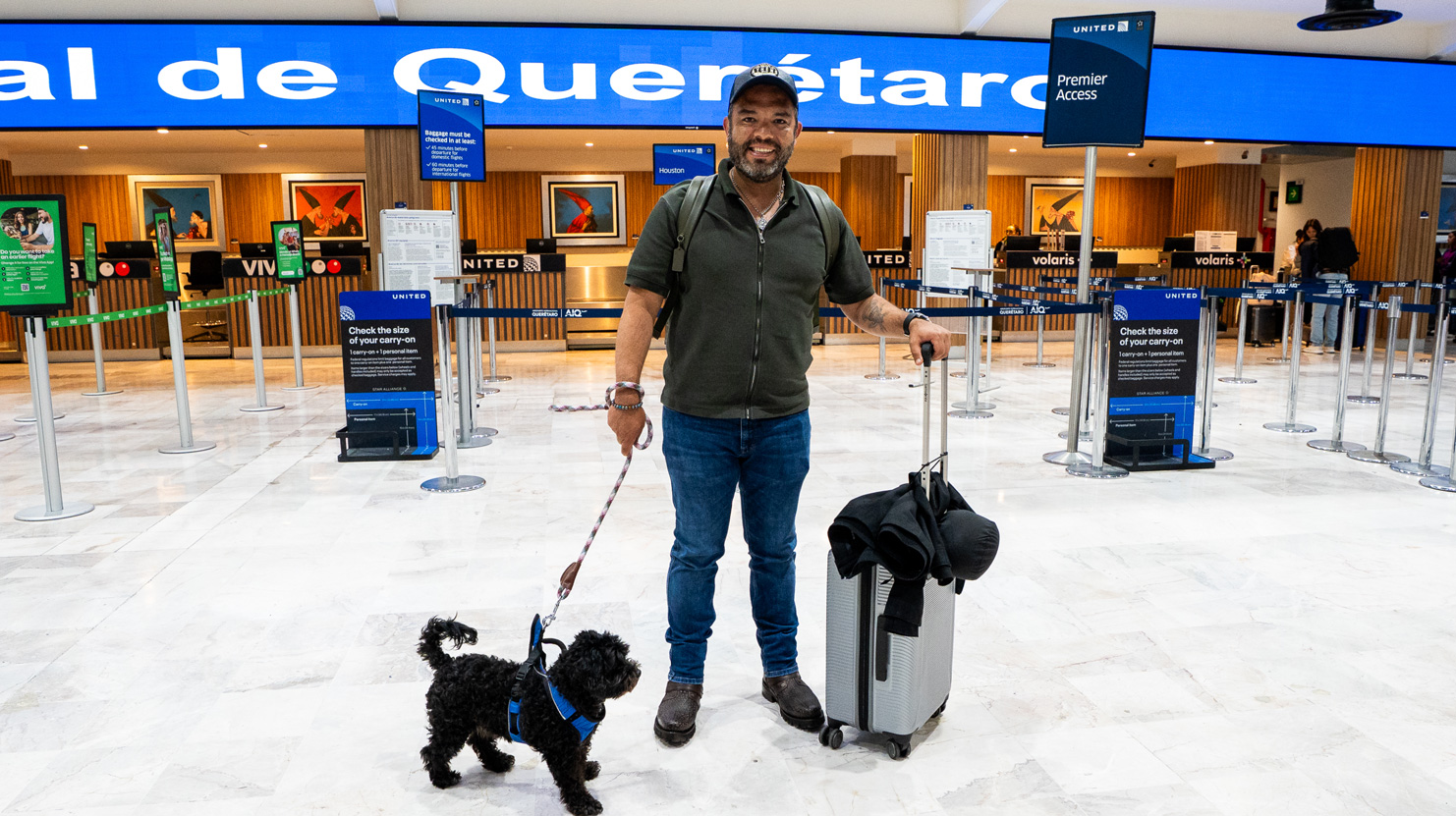Traveling with pets

Your best friend travels with you too
Learn the recommendations and requirements for a safe and comfortable flight for both of you.
If you want to travel with your pet on the plane, the first thing you need to do is choose a company that allows flying with dogs and cats (or another animal if your pet is different). Nowadays, airlines are not required to accept pets either in the cabin or elsewhere.
Each airline is free to decide if they accept them and sets its own rules. In cases where the airline does accept pets – and more and more airlines do – keep in mind that purchasing a ticket to travel with a pet might take longer than buying a regular ticket, usually because it requires approval or paperwork from higher authorities.
To find out if the airline you want to use allows pets on board, visit their website or call their customer service. And yes, be prepared to pay extra, because in almost all cases, your pet also pays for a ticket (even if flying in a carrier at your feet or on your lap).
Advance planning is key when traveling with pets. Make sure you have all the required documentation on hand, especially if you are traveling outside of Mexico, as some countries require specific health certificates or prior treatments.
If your destination is a country other than the United States or Canada, you must obtain the Zoosanitary Export Certificate (CZE) issued by SENASICA.
This document requires two official signatures:
The first signature, from an authorized official veterinarian, who will issue the CZE (Zoosanitary Export Certificate) once you have complied with the vaccines and/or treatments required by the destination country.
NOTE: At the Querétaro International Airport there is no authorized official veterinarian, so you must go beforehand to an office that does offer this service. Check the official directory of issuing offices from SENASICA here:
https://www.gob.mx/senasica/documentos/oficinas-expedidoras-del-certificado-zoosanitario-para-exportacion?state=published
The second signature is placed on the CZE (Zoosanitary Export Certificate) by SENASICA officials on the day of the flight, after a physical inspection of your pet at the airport.
At Querétaro International Airport (AIQ), the second signature is granted only with a prior appointment through the Office of Agricultural Health Inspection (OISA) at the phone number 55 59 05 1000 ext. 52620, 52621 and 52622 or by email at oisaqueretaro@senasica.gob.mx
Additionally, we recommend visiting the SENASICA website www.senasica.gob.mx and reviewing the “traveling with pets” microsite at the link https://www.gob.mx/senasica/documentos/mascotas-268065?state=published , as well as accessing the consultation module for zoosanitary requirements for pet export https://sistemasssl.senasica.gob.mx/sinacertwebWeb/pages/publico/consultaRequisitosExportacion.xhtml (add link), where you can verify the specific requirements requested by each country.
Each country may require the documentation it deems appropriate when allowing pets to enter its territory. Therefore, before flying with your dog or cat, you should find out what administrative requirements must be met.
Wherever you fly with your dog or cat, you will need a pet passport. This passport is issued by your veterinarian and is usually given when the animal is microchipped (whether you are traveling immediately or not). This passport contains the animal´s medical history (vaccinations, deworming treatments, etc.). The destination country may require other documentation in addition to the pet passport, which is why it is important to be well informed before flying.
One of the most important things when traveling with pets on a plane is choosing the right carrier. The right carrier for flying with a dog or cat is one that guarantees maximum comfort for your pet and, at the same time, complies with the regulations of the airline you are going to use. Once you find an airline that allows animals to fly, make sure you know what their requirements are in terms of carriers, as each company has its own rules, which are usually very specific.
The size and breed of the dog is an important point to consider when flying. Dogs weighing more than 8 kilograms, including the carrier, must travel in the hold.

